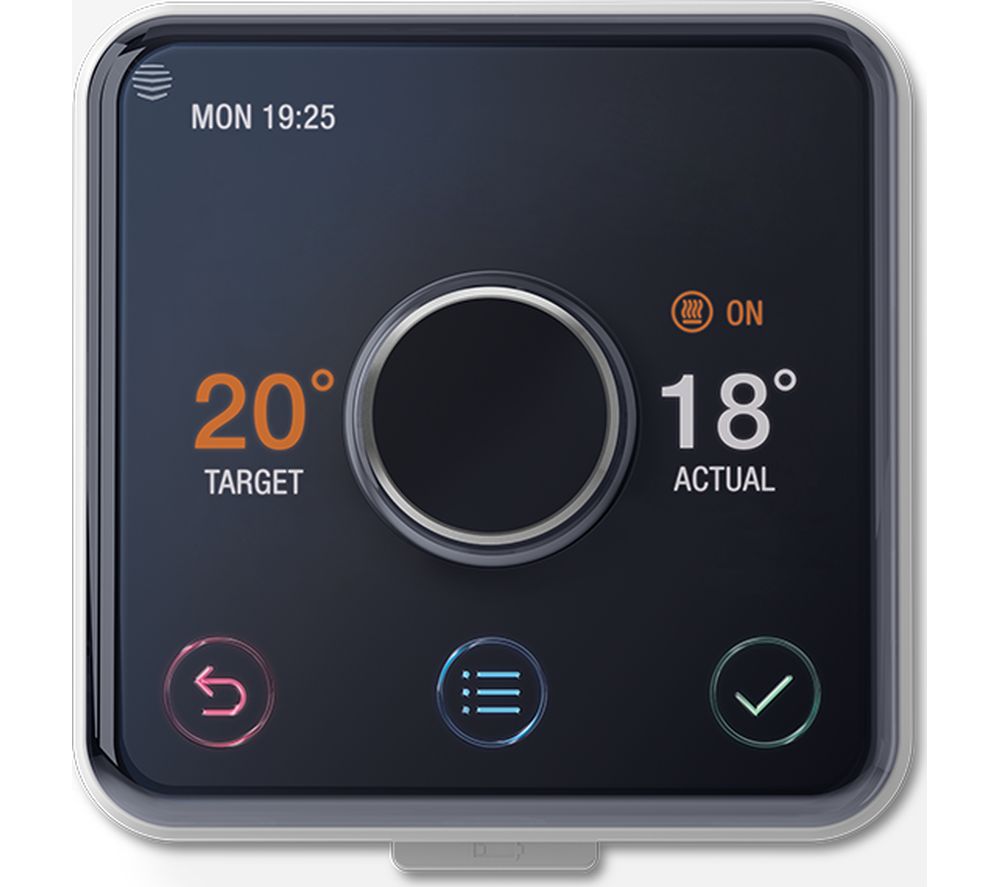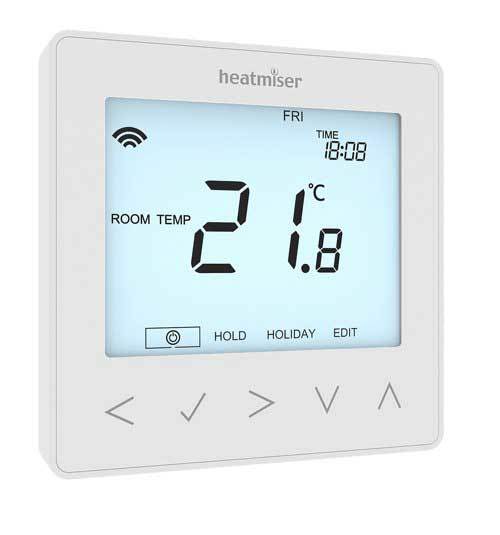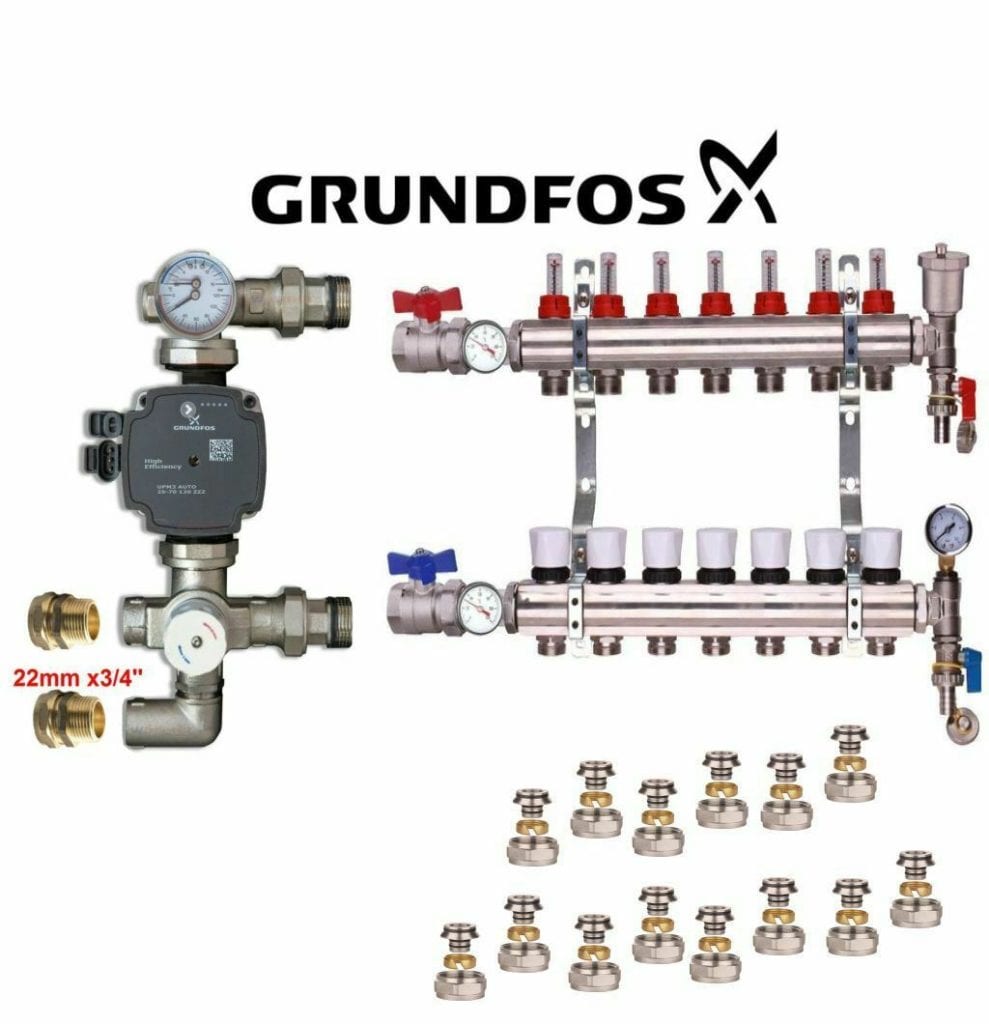Underfloor heating is a very clean and simple form of heating, ideally suited to today’s well-insulated, low-energy and airtight buildings. An underfloor heating system takes advantage of one of the most basic laws of physics – which is that heat rises.
Why would you choose underfloor heating?
Comfort: The most compelling reason to choose underfloor heating is comfort. Radiation, like the heat we get from the sun, is the most natural and comfortable form of heating. Research has shown that people feel more comfortable when they experience warm feet and a cold head. An underfloor heating system produces these conditions naturally, there are no localised hotspots, just a gentle feeling of warmth throughout your home.
Energy-Efficient & Cost-Effective: Because an underfloor heating system uses radiant heat most people find they are comfortable at temperature settings several degrees lower than with other conventional heating systems. You can actually lower your thermostat setting while enjoying the same level of comfort and reducing your heating bills by anything up to 30%. This means that underfloor heating is energy efficient and cost-effective.
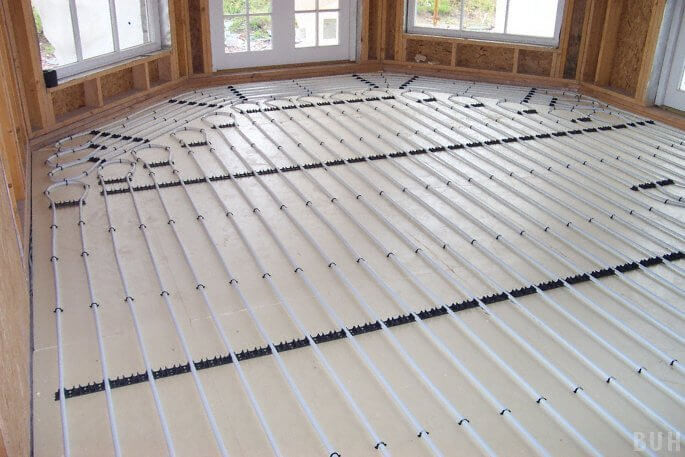
How Underfloor Heating Works
Water (25-40°C) is circulated through a series of polyethylene pipe installed and integrated within the floor make-up. The pipe is then connected to a centrally located manifold. The temperature of each room can be individually controlled as required via room thermostat. Each room thermostat can be set at 2°C lower than a room heated by radiators. This is because underfloor heating delivers 70% radiant heat and 30% convection heat as opposed to radiators, which emit 30% radiant heat and 70% convection heat. This means that an underfloor heating system is a more efficient way of heating your home. Each room can be controlled by a programmable room thermostat allowing each room to have time and temperature control, when any one of these thermostats call for heat they open an electronically operated valve (actuator) that is fitted to the top body of the manifold, this would then turn your pump on and fire up your heat source. Each loop on the manifold is capable of having its own control typically one loop per room.
Radiators distribute heat by convection currents, which can result in draughts and hot spots. Radiators transfer heat into a room largely by convection from a hot metal surface. Because the surface of the radiator is small, in comparison to the volume of the room, it needs a high heat input and doesn’t spread the heat evenly. Convection currents circulate allergens, dust particles, fumes and germs which are then distributed around the building, contributing to an unhealthy atmosphere.
Underfloor Heating is easy to install, requires low maintenance and is very cost effective to run. The room is heated mostly by radiation, like the heat we get from the sun, the most natural and comfortable form of heating. An underfloor heating system creates an even temperature, comfortable environment with no hot or cold draughts, just a gentle feeling of warmth throughout your home. Rooms with high ceilings such as churches, sports halls or industrial units gain even greater benefits. With radiator systems, some of the heat is immediately wasted as it rises to the ceiling. With an underfloor heating system, the heat is concentrated at floor level where it is most needed. In rooms with large areas, underfloor heating is the only way to heat the centre of the floor area effectively.
Underfloor Heating systems goes hand in hand with heat pump installations
An underfloor system heating circulates low temperature water. Most conventional heating systems circulate warm water, usually between 50ºC to 80ºC whereas an underfloor heating system circulates water between 25ºC to 40ºC. A heat pump is most efficient when heating water at lower temperatures, the heat pump efficiency goes up bringing your running cost down.
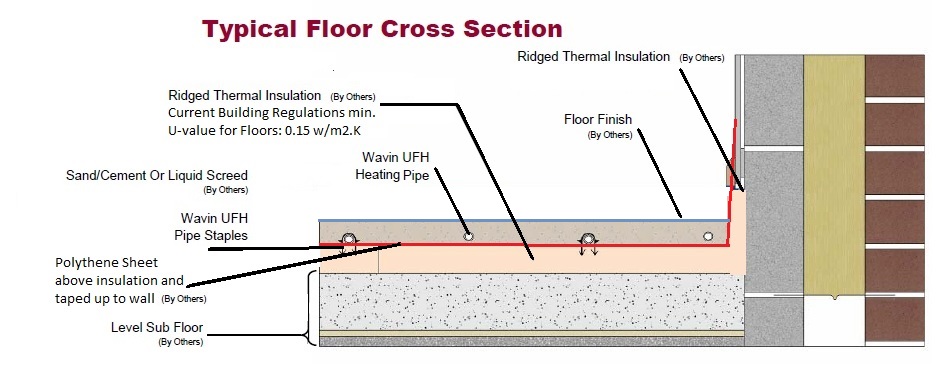
Main features & benefits
Underfloor Heating also referred to as geothermal heating have become a firm favourite for those undertaking new build projects and the benefits are clear:
- True comfort: Since radiant heat is the most natural and comfortable form of heating. An underfloor heating system will provide true comfort levels, giving a gentle feeling of warmth throughout your home.
- Saves you money on energy bills: With underfloor heating the thermostat of each room can be set at 2°C lower than a room heated by radiators. You can save up to 30% on your heating bills.
- Perfect match with heat pumps: Underfloor heating goes hand in hand with heat pump installations. An underfloor heating system circulates low temperature water. A heat pump is most efficient when heating water at low temperatures.
- Invisible: No radiators, you are free to position your furniture however you would like in your home.
- Health and Hygiene: An underfloor heating system reduces the circulation of airborne pollutants. It also helps to reduce house dust mites as the moisture content is too low to allow dust mites to live. This is great news for anyone with allergies or asthma.
- Increased Humidity: With underfloor heating the heat comes from hot water, this also introduces moisture into the air and can reduce health problems caused by air which is extremely dry.
- Safety: The hidden heating elements of an underfloor heating system is also a safety bonus since you no longer need to worry about children burning themselves.

Underfloor Heating Controls
Deciding on whether to have underfloor heating installed is one thing, but deciding on the underfloor heating controls and thermostats is another. The control system, like in any heating system, is the key to success. It should be designed to match the application and individual areas should have independent control. Let’s think for a moment how it would be to have a single light switch for the entire house – it really doesn’t make sense does it? However, until recently, a single heating control would have been accepted. Heatmiser is the leading manufacturer of heating control systems. Energywise Ireland stock different types of Heatmiser underfloor heating thermostats from dial and button type to state of the art touch screens.

